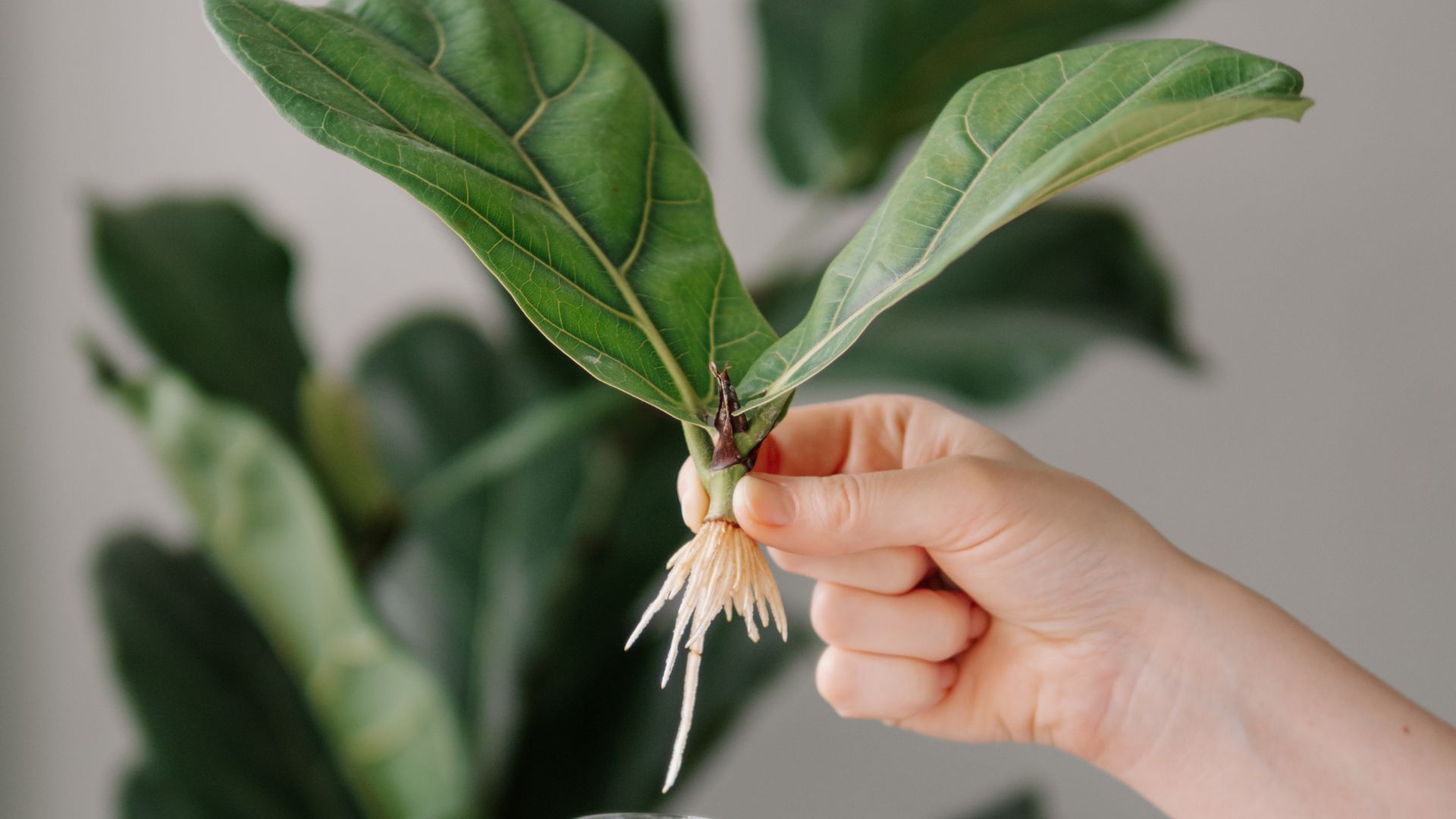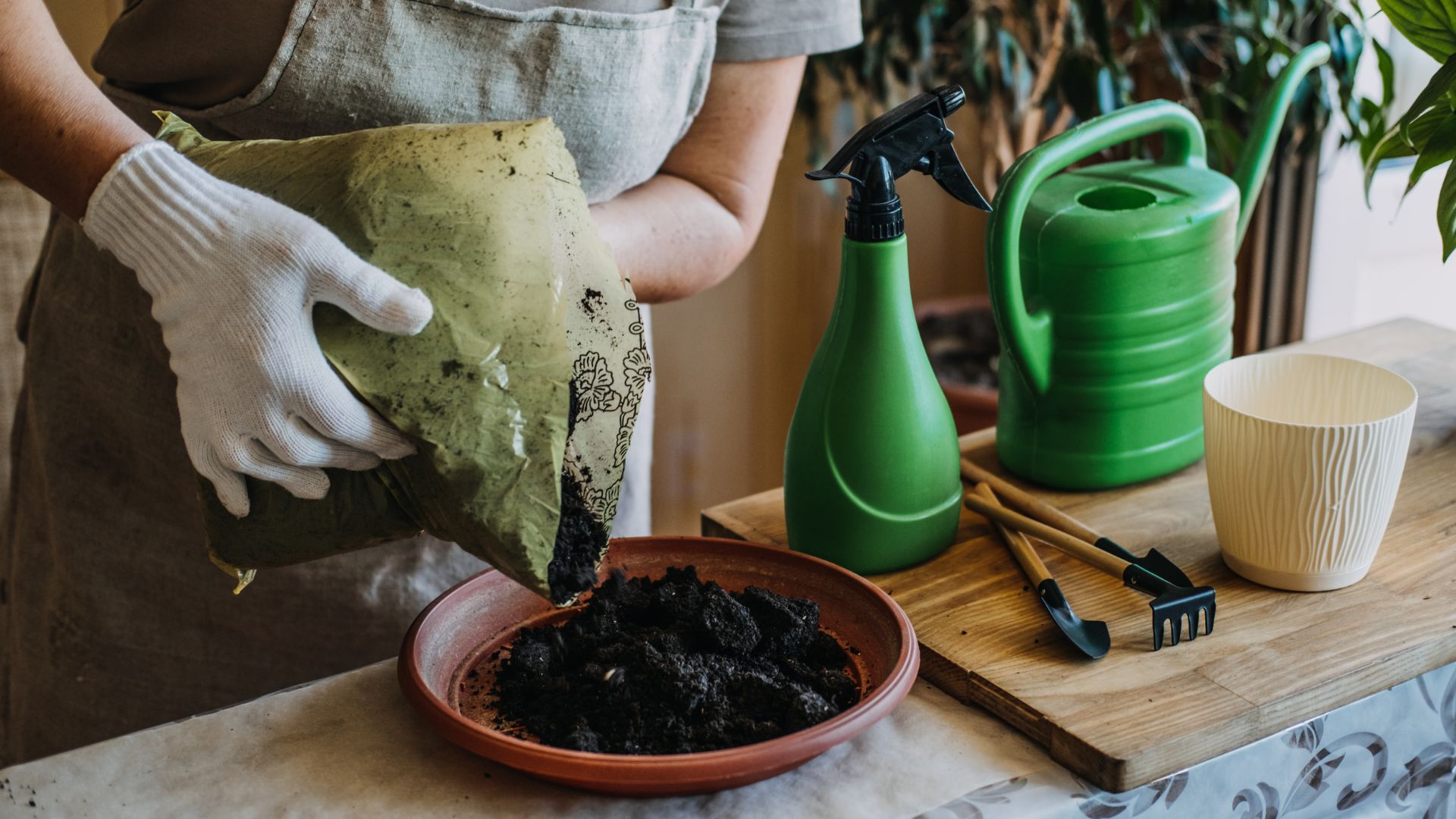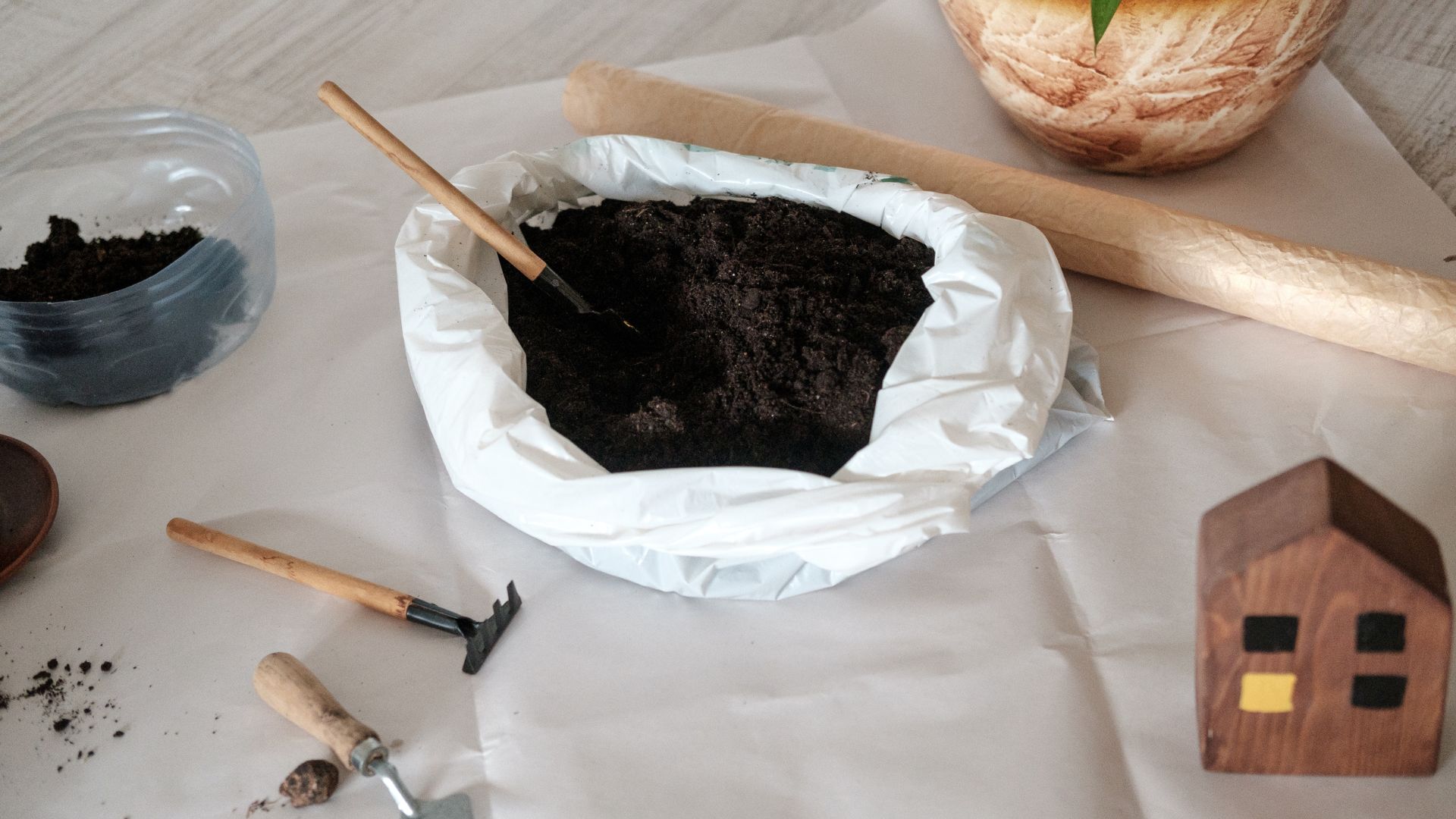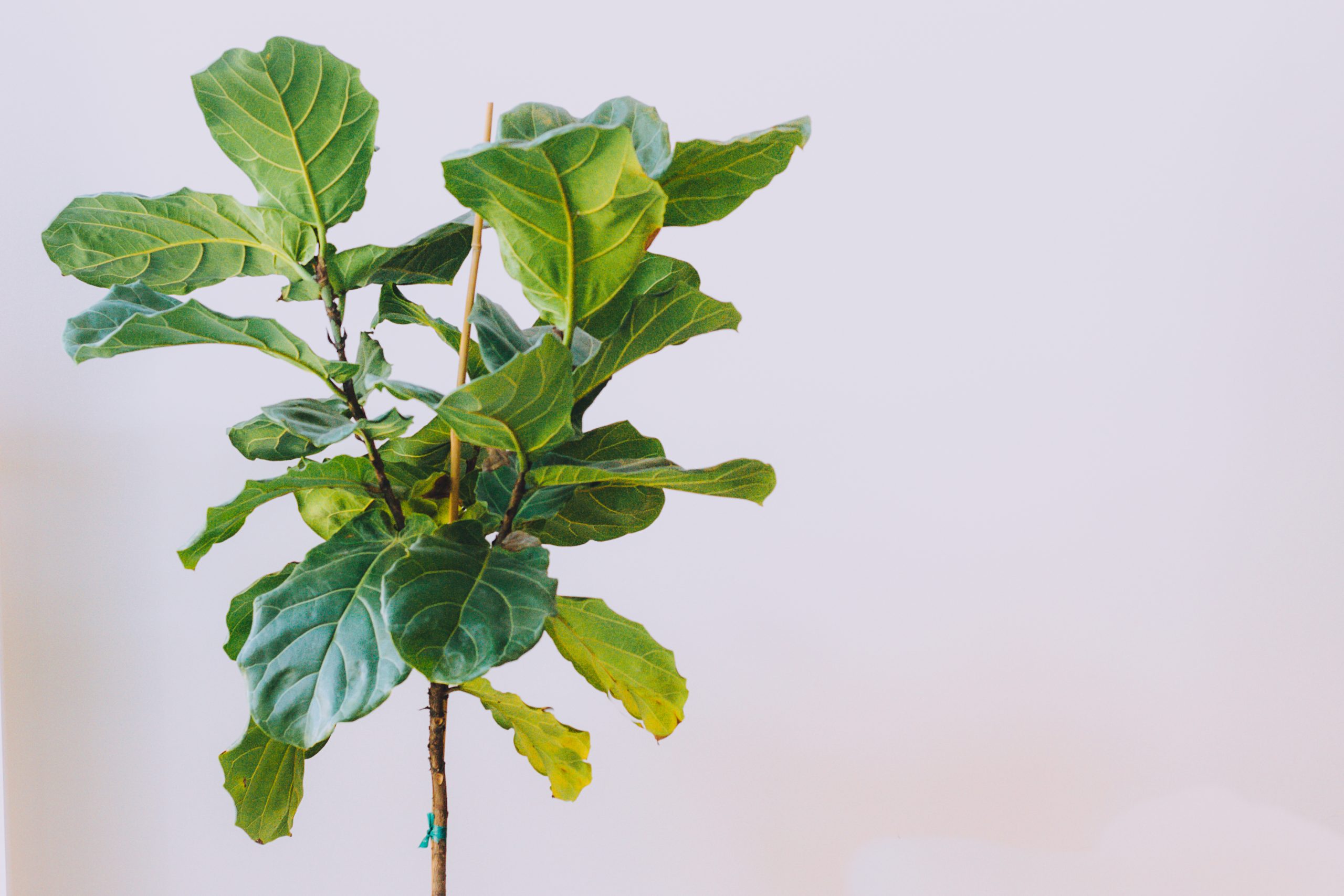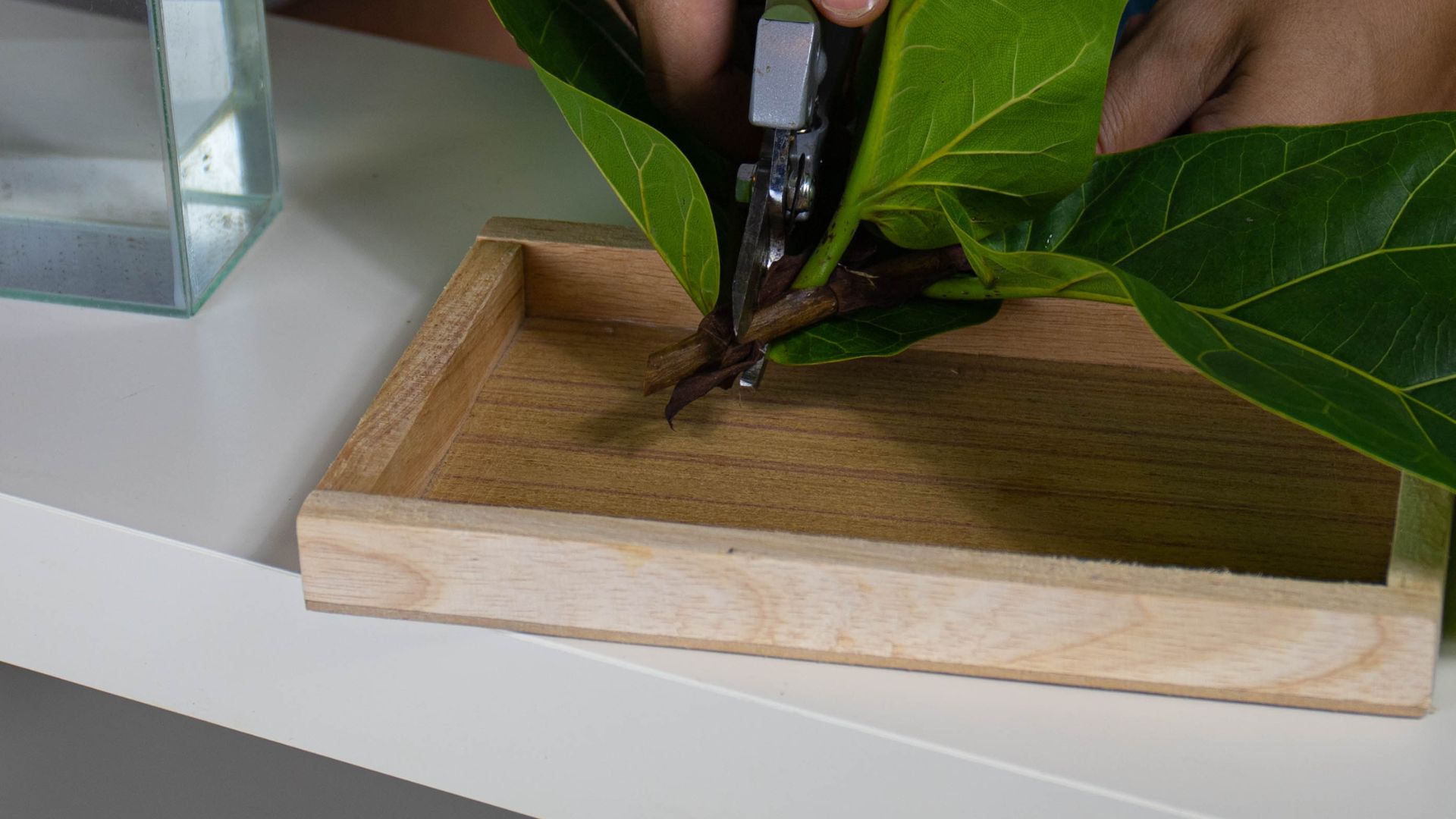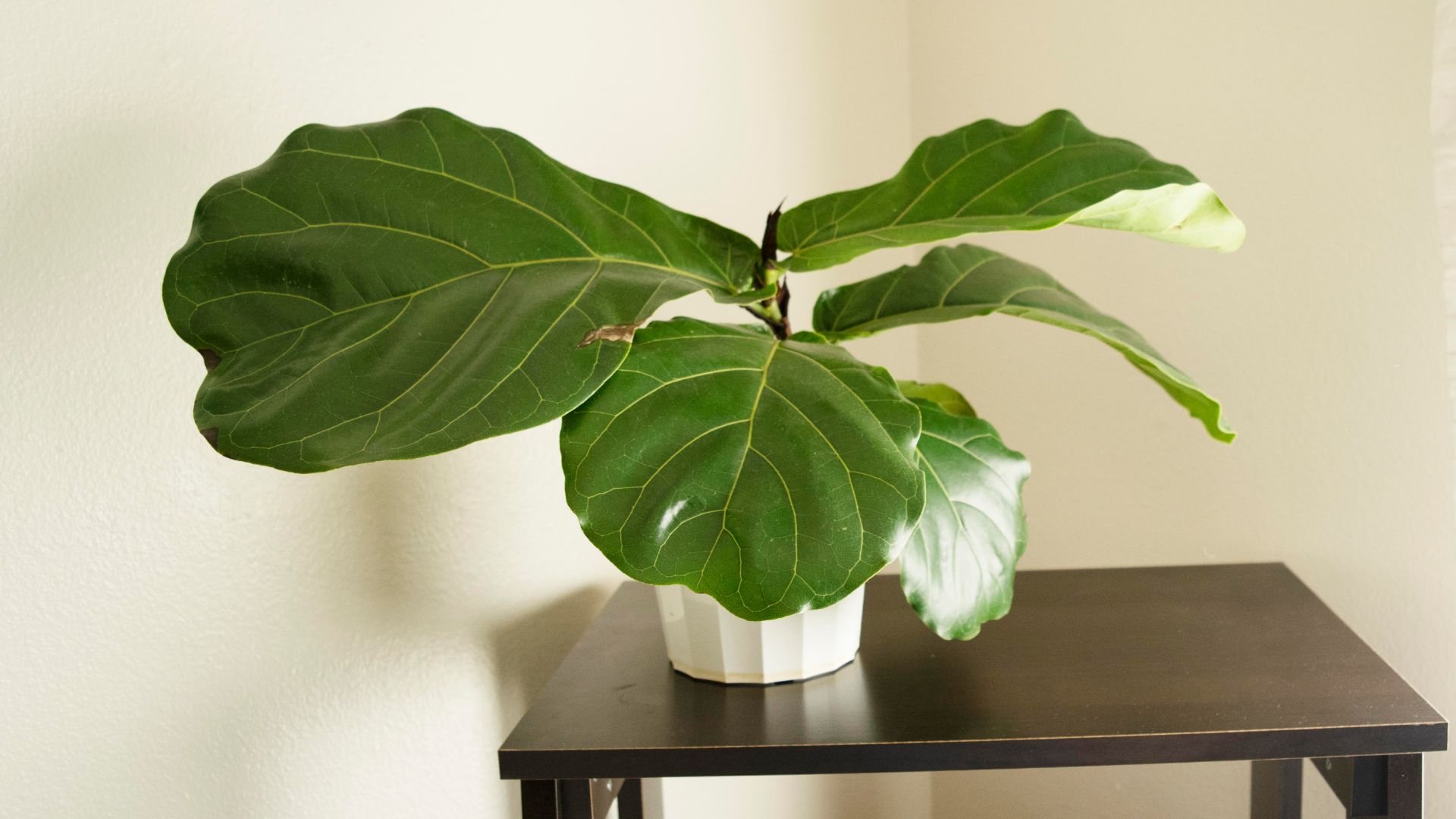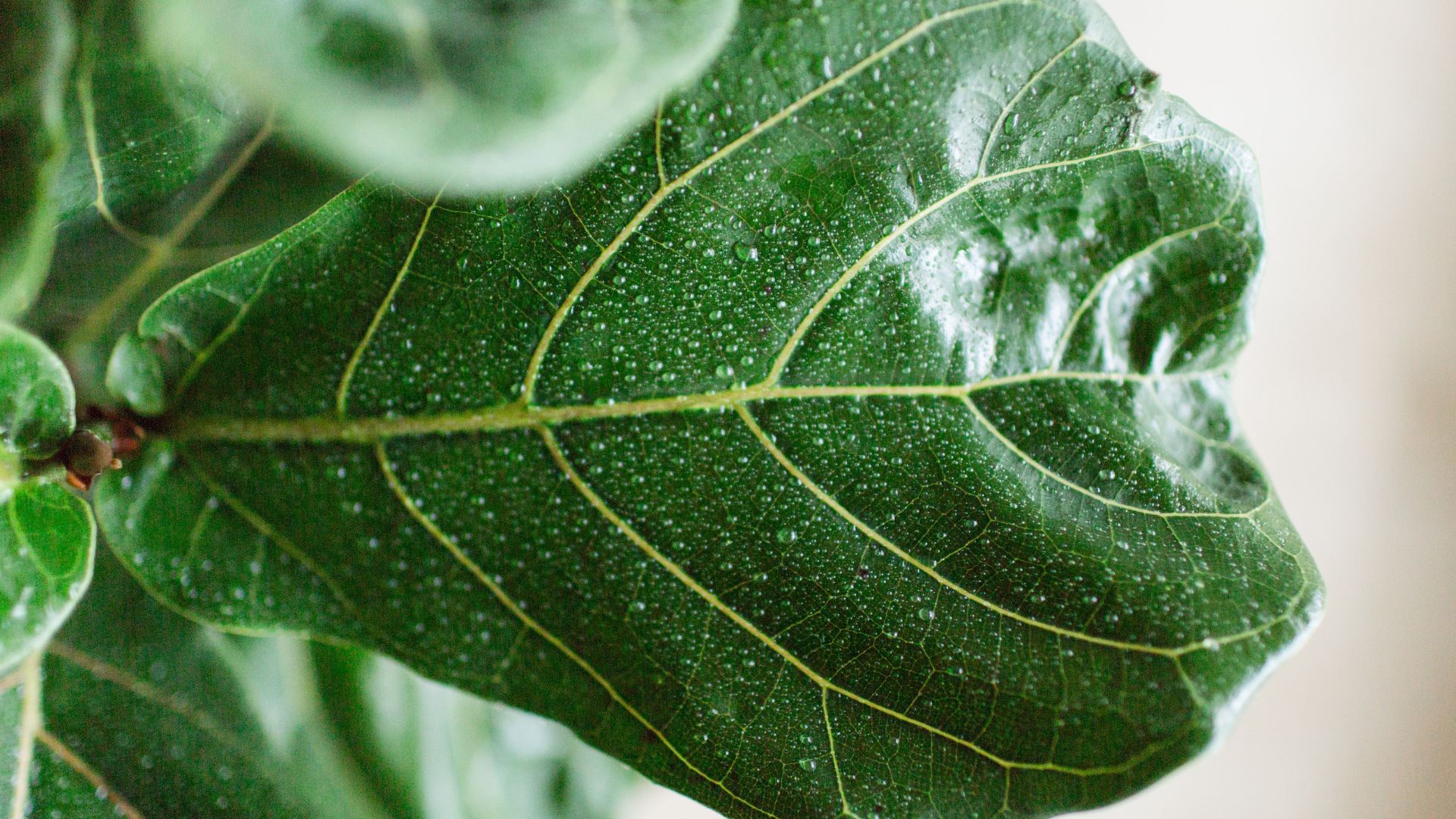When you want to add a new plant to your collection and go to a nursery to find one, I’m sure the Fiddle-leaf fig will catch your eye.
Its massive foliage is the main reason everyone wants more of these plants. If you want the same and you already have one FLF, there’s no need to purchase a new plant.
The best and easiest solution is to multiply the plant! And in this article, I’ll show you how to propagate Fiddle-leaf figs in a few easy steps.
Let’s get started!
1. Prepare The Equipment
Every gardening task should start with gathering all the necessary equipment. First and foremost, you’ll need a FLF stem cutting because this propagation method works best for these plants.
I’ll show you how to take the cuttings in detail later in the article. The second thing to prepare is a pair of sharp and clean, high-quality shears.
Many gardeners believe that any cutting tool can do the same job but, trust me, that’s not the case. You don’t want to break or tear the stem when cutting it and you most certainly don’t want to transmit any potential pests or diseases.
For this propagation method, you’ll also need to prepare a smaller container with drainage holes in the bottom to prevent the rotting of your FLF stem cutting.
And last but not least, you should prepare a plastic bag and a couple of skewers.
2. Prepare The Growing Medium
Even though you can prepare your propagation mix later, I recommend completing this task first because cleaning your hands over and over again isn’t something you want.
You aren’t limited when it comes to growing medium for FLF cuttings. Standard potting soil or the amended soil you use for your houseplants will all work well.
My favorite combination is coconut coir and perlite amended with some horticultural sand to enhance drainage and aeration.
The only growing substrate you shouldn’t use is garden soil because it’s too compact and could cause root rot in your Fiddle-leaf fig.
Additionally, this type of soil can be infected by pests or diseases which can harm the cuttings.
Once you prepare your soil, put it in the container; fill it up just below the rim or it will spill out once you irrigate your cutting.
3. Select A Branch
Now take a close look at your FLF and look for a branch with green growth. These branches root faster and there’s no need to apply rooting hormone.
Woody cuttings can also root but they take more time and you’ll most likely need to assist by applying rooting hormone.
The essential thing is to select a Fiddle-leaf fig branch that is completely healthy. Never use any discolored, diseased branches, or one infested by pests, because your cutting won’t root and will most likely die.
If you have a mature FLF and you would like to reduce it in size, you can cut off the longest sections first.
Another method is to remove the side stems and use them for propagation.
Remember that the cutting must be about 10 inches long for a successful rooting. It should feature at least one set of leaves at the upper part of the FLF stem cutting and there should be a few nodes lower down.
4. Make An Incision
Once you select a suitable branch, grab your shears! Make a clean cut just above the set of leaves on your FLF cutting, making sure you cut at a slight angle.
The next step is to cut off all the lower foliage because they could rot if they’re planted in the growing substrate.
Sometimes, the stem cuttings have too large upper leaves, and if that’s the case with your FLF cutting, you can cut them horizontally. The bigger the leaf, the more nutrients and energy it will need for rooting.
5. Put The Cutting In The Rooting Medium
Now it’s time to plant the cutting in the prepared growing substrate. Start with making a small hole in the center of your substrate.
If you have a woody FLF cutting, you can dip its end in a rooting hormone to promote root growth.
Take the cutting and put its lower half in the hole, making sure you also bury the nodes but the leaves are above the soil line.
Pack the soil around the cutting well to keep it in place and irrigate the cutting.
You can also propagate your Fiddle-leaf cuttings in water, but they’ll be more sensitive and it’s especially hard for the woody cuttings to root.
6. Cover With Plastics
And the last step is to put a plastic bag over your FLF cutting. You don’t have to do this if you have a humid greenhouse.
So, the purpose of the plastic bag is to trap humidity and create a perfect environment for your FLF cutting.
Make sure the bag doesn’t touch the cutting. Secure it by burying the skewers around the pot edges. Remember that they should be taller than the cutting.
Mold growth may occur and airflow can be poor within the bag but you can avoid these issues by removing the bag every day or two.
Select a warm and well-lit spot for your FLF cutting; make sure it doesn’t receive direct sunlight because that’s one of the common reasons for various problems in Fiddle-leaf figs.
Your cutting should generate new roots soon; gently pull the cutting and if it resists, you can repot your Fiddle-leaf fig.
When To Propagate
Choosing the right time to propagate your FLF is crucial for successful rooting of the cutting.
Spring is ideal for the propagation of this plant species because the temperatures are rising and it triggers the plant to generate new growth.
Generally speaking, you can propagate at any time of the year but the thing is that it’s easier to control conditions in spring.
Additionally, rooting is way slower during colder months not only because of temperatures, but also because of the branches that become woody at this point.
Can You Propagate FLF From Single Leaves?
You may have seen numerous pictures on the Internet with single FLF leaves and roots. Well, things may not go that well in reality.
A single Fiddle-leaf fig may generate smaller roots if put in water. However, there will be no new stem growth if there’s no branch tissue, i.e., a single leaf can’t become a full plant without this tissue.
If you like the display of rooted leaves in water, you can, of course, keep it in your home, but don’t expect it to turn into a healthy and large Fiddle-leaf fig plant.
The stem cutting method is definitely the best way to get new FLF in your collection!

